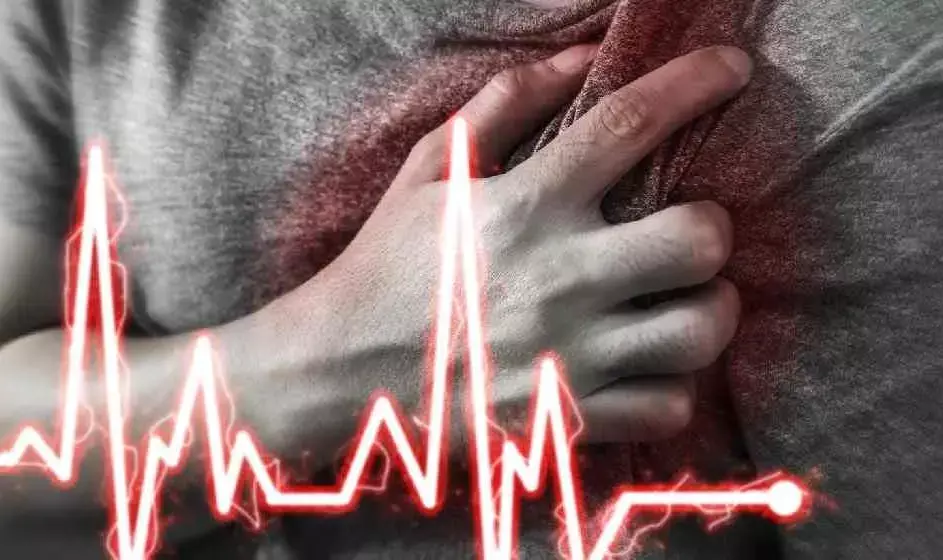- Home
- Medical news & Guidelines
- Anesthesiology
- Cardiology and CTVS
- Critical Care
- Dentistry
- Dermatology
- Diabetes and Endocrinology
- ENT
- Gastroenterology
- Medicine
- Nephrology
- Neurology
- Obstretics-Gynaecology
- Oncology
- Ophthalmology
- Orthopaedics
- Pediatrics-Neonatology
- Psychiatry
- Pulmonology
- Radiology
- Surgery
- Urology
- Laboratory Medicine
- Diet
- Nursing
- Paramedical
- Physiotherapy
- Health news
- Fact Check
- Bone Health Fact Check
- Brain Health Fact Check
- Cancer Related Fact Check
- Child Care Fact Check
- Dental and oral health fact check
- Diabetes and metabolic health fact check
- Diet and Nutrition Fact Check
- Eye and ENT Care Fact Check
- Fitness fact check
- Gut health fact check
- Heart health fact check
- Kidney health fact check
- Medical education fact check
- Men's health fact check
- Respiratory fact check
- Skin and hair care fact check
- Vaccine and Immunization fact check
- Women's health fact check
- AYUSH
- State News
- Andaman and Nicobar Islands
- Andhra Pradesh
- Arunachal Pradesh
- Assam
- Bihar
- Chandigarh
- Chattisgarh
- Dadra and Nagar Haveli
- Daman and Diu
- Delhi
- Goa
- Gujarat
- Haryana
- Himachal Pradesh
- Jammu & Kashmir
- Jharkhand
- Karnataka
- Kerala
- Ladakh
- Lakshadweep
- Madhya Pradesh
- Maharashtra
- Manipur
- Meghalaya
- Mizoram
- Nagaland
- Odisha
- Puducherry
- Punjab
- Rajasthan
- Sikkim
- Tamil Nadu
- Telangana
- Tripura
- Uttar Pradesh
- Uttrakhand
- West Bengal
- Medical Education
- Industry
Stress at Workplace may increase Coronary Heart Disease Risk among men

The risk of coronary heart disease (CHD) increases with workplace stress among white-collar male workers, according to new prospective data. A recent study published in Circulation: Cardiovascular Quality And Outcomes by Mathilde Lavigne-Robichaud and colleagues delves into the connection between psychosocial stressors in the workplace and CVD risk, has discovered significant associations between job strain and effort-reward imbalance (ERI) among men followed for 18 years. However, this relationship was not observed in women, likely due to differences in the timing of heart disease development.
The study included 6,465 white-collar workers, with men primarily reporting active job strain (34.25%) and women often reporting passive job strain (42.87%). ERI was observed in 24.7% of men and 23.2% of women, with 8.3% of men and 10.3% of women experiencing both job strain and ERI. Over the follow-up period, 571 incident CHD cases occurred in men, and 265 in women.
- The research revealed that exposure to either job strain or effort-reward imbalance (ERI) was linked to a 49% increase in CHD risk, even after adjusting for various factors (HR, 1.49; 95% CI, 1.07–2.09).
- When individuals were exposed to both job strain and ERI, their CHD risk surged by 103% (HR, 2.03; 95% CI, 1.38–2.97).
- These associations remained consistent even after excluding early CHD cases and censoring at retirement.
- In contrast, among 3,347 women in the study, 265 experienced their first CHD event.
- The findings for women were inconclusive, with passive job strain showing an HR of 1.24 (95% CI, 0.80–1.91), active job strain an HR of 1.16 (95% CI, 0.70–1.94), job strain alone an HR of 1.08 (95% CI, 0.66–1.77), and ERI an HR of 1.02 (95% CI, 0.72–1.45).
The study highlights the significant risk associated with the combination of job strain and ERI, particularly among men. This underscores the need to address workplace stressors to protect heart health effectively. The relationship likely involves various factors, including physiological, behavioural, and inflammatory responses, which were independent of lifestyle factors.
The findings emphasise the importance of preventive measures, and it is hoped they will lead to positive changes in workplaces, policies, and individual health outcomes. The research team plans to investigate the gender-specific effects of workplace stressors on heart health further and evaluate the effectiveness of workplace interventions aimed at mitigating stress and promoting well-being. Addressing workplace stress collectively is crucial to reduce the overall incidence of CHD and improve well-being.
Reference:
Lavigne-Robichaud, M., Trudel, X., Talbot, D., Milot, A., Gilbert-Ouimet, M., Vézina, M., Laurin, D., Dionne, C. E., Pearce, N., Dagenais, G. R., & Brisson, C. (2023). Psychosocial stressors at work and coronary heart disease risk in men and women: 18-year prospective cohort study of combined exposures. Circulation. Cardiovascular Quality and Outcomes. https://doi.org/10.1161/circoutcomes.122.009700
Dr Riya Dave has completed dentistry from Gujarat University in 2022. She is a dentist and accomplished medical and scientific writer known for her commitment to bridging the gap between clinical expertise and accessible healthcare information. She has been actively involved in writing blogs related to health and wellness.
Dr Kamal Kant Kohli-MBBS, DTCD- a chest specialist with more than 30 years of practice and a flair for writing clinical articles, Dr Kamal Kant Kohli joined Medical Dialogues as a Chief Editor of Medical News. Besides writing articles, as an editor, he proofreads and verifies all the medical content published on Medical Dialogues including those coming from journals, studies,medical conferences,guidelines etc. Email: drkohli@medicaldialogues.in. Contact no. 011-43720751


